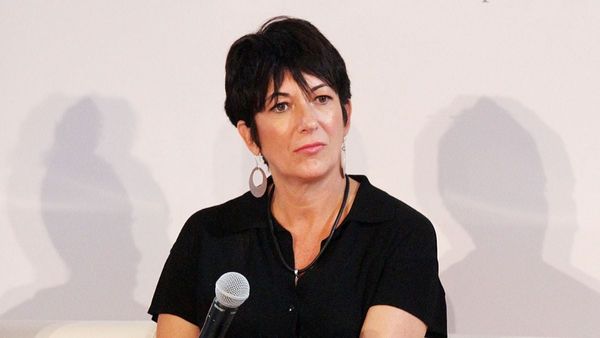
You’re a functional adult (well, most of the time) and you know you’ve got to prioritize saving money. But figuring out exactly how much of your paycheck needs to go into your savings isn’t always easy — sometimes, you suffer from an overload of approaches. There’s the famed 50/30/20 rule. Zero-based budgeting. The envelope system. It’s enough to make your head spin.
Learn More: Here’s Why Gen Z is Embracing Frugal Living According to Brian Jung
Find Out: 3 Advanced Investing Moves Experts Use to Minimize Taxes and Help Boost Returns
Each approach has its own guidelines and general rules of thumb — and parsing through all of them feels a little intense. Anita Kinoshita, CFLP, creator of Her FI Story, understands your confusion. She knows that there are so many competing messages out there about how to divvy up your paycheck to maximize savings.
But she also knows that the only right approach is the one that’s right for you. GOBankingRates connected with Kinoshita as part of our Top 100 Money Experts series to learn how much you should really save from your paycheck every month. Her answer may surprise you.
Know That One Size Does Not Fit All
Your neighbor swears the 50/30/20 rule helped them pay down their credit card debt while taking a European vacation every year. A friend tells you that zero-based budgeting has changed her entire mindset on spending.
But the high cost of living in your area means that, sadly, 50% of your income won’t fully cover essentials like food and housing. Or the idea of making every purchase — even a stick of gum — align with your values seems emotionally exhausting.
Kinoshita has good news for you. You don’t have to follow these approaches to the letter. If you find something that has some ideas you like, you can treat it as a helpful guide to get you started. Remember, budgeting plans aren’t one-size-fits-all. Blindly following one plan without thinking about the implications on your life can cause money misfortune you wouldn’t anticipate.
She breaks down a hypothetical example involving the 50/30/20 rule: “If you were debt free, had zero saved for retirement, and had no short-term savings planned, saving 20% of your post-tax income would mean you could retire in 37 years,” she said. “Now, 20% saved (or invested) is arguably better than 0, but are you okay with being dependent on a paycheck for 37 more years?”
If your answer to that question is understandably no, being locked into the 50/30/20 plan would be a bad idea.
Read Next: The One Dangerous Habit Keeping You in Credit Card Debt, According to Liz Claman
The Right Savings Target Is One That Works for Your Life
So, if one of the many formal saving strategies blazing up the bestseller lists or trending on TikTok isn’t for you, how do you find the right amount of your paycheck to sock into savings every month? Kinoshita’s response: it depends.
“The ‘right’ percentage of your paycheck to save each month depends on your goals, timeline, and the quality of life you want to have today,” she said. “There is no universal ‘right’ percentage, as these variables aren’t fixed for everyone.”
It’s better to start with your goals and work backwards to determine how much of your paycheck to put away. Thinking about her own goals — retiring in her 40s, eating omakase twice a year, and traveling at least once a year — helps Kinoshita determine how much money to pull out of her paycheck into savings.
“To determine the right amount of money I need to keep from my paycheck, I need to start with the goals in mind, then think about an amount I need to put away,” she said. “A percentage isn’t always a helpful place to start.”
Your Savings Plan Should Evolve Over Time
Developing a personalized plan oriented around your goals also gives you flexibility when life happens. Sometimes the rent goes up, or your car needs repairs. Treating your savings plan as a “living document” that can change as your circumstances do can help you better track your savings and make key adjustments when you’ve been overspending.
If you’ve noticed that your expenses are higher than usual, and you’re not able to put as much from your paycheck into savings, Kinoshita wants you to conduct an expense audit. Ask yourself about your top three or four expenses and whether there’s a way to cut back or eliminate them.
“Your top three or four expenses are likely needs, but those are not exempt from taking a mindful reconsideration,” she said.
To make your paycheck stretch further, she wants you to think about what you’re spending on that isn’t bringing you any value or satisfaction.
“By taking this approach, you avoid the unhelpful approach to saving that focuses only on categorizing your expenses into needs and wants,” she said.
Bottom Line
There’s no one-size-fits-all approach to how much of your paycheck you should save each month. There’s only the best option that aligns with your goals and vision.
This article is part of GOBankingRates’ Top 100 Money Experts series, where we spotlight expert answers to the biggest financial questions Americans are asking. Have a question of your own? Share it on our hub — and you’ll be entered for a chance to win $500.
More From GoBankingRates
- Vivian Tu: The Simple Money Rule That Can Keep You Out of Debt
- Why You Should Start Investing Now (Even If You Only Have $10)
- 3 Advanced Investing Moves Experts Use to Minimize Taxes and Help Boost Returns
- Too Many People Overlook This Retirement Income Stream
This article originally appeared on GOBankingRates.com: Here’s How Much of Your Paycheck You Should Save Each Month, According to an Expert







